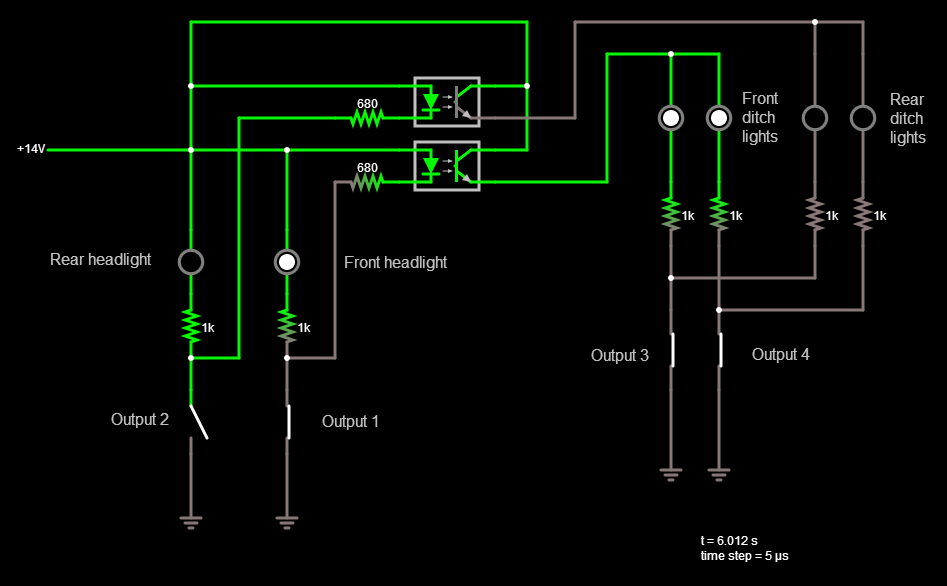This might work better, and be smaller than a relay too.
 Click to make bigger
Click to make biggerA pair of SMD opto isolators (can someone please explain the difference between an opto coupler and opto isolator in laymans terms!) and their resistors make up the device. You'd have to research the opto isolators to use as you'd want at least 50mA on the output channel, even though in the drawing as it is the ditch lights only "flow" about 20mA in total anyway.
You could also make you own opto isolator like this too, but that'd need research as well.

With this version the ditch lights are still dependent on the headlight being on but you can have both front and rear ditch lights on, and of course the Auto flash ditch lights on horn function works for both front and rear ditch lights. The only thing I'm not sure about is how dimming the headlight will affect the opto isolator.
Now, Alan will hopefully come along and tell me where my mistake is because there's bound to be one, even though the simulator says it works.
I can't post the url because it's over 2000 characters long but you can import the attached text file into
Paul Falstads circuit simulator to run the simulation.
 ditch light idea v2.txt
ditch light idea v2.txt- Tim